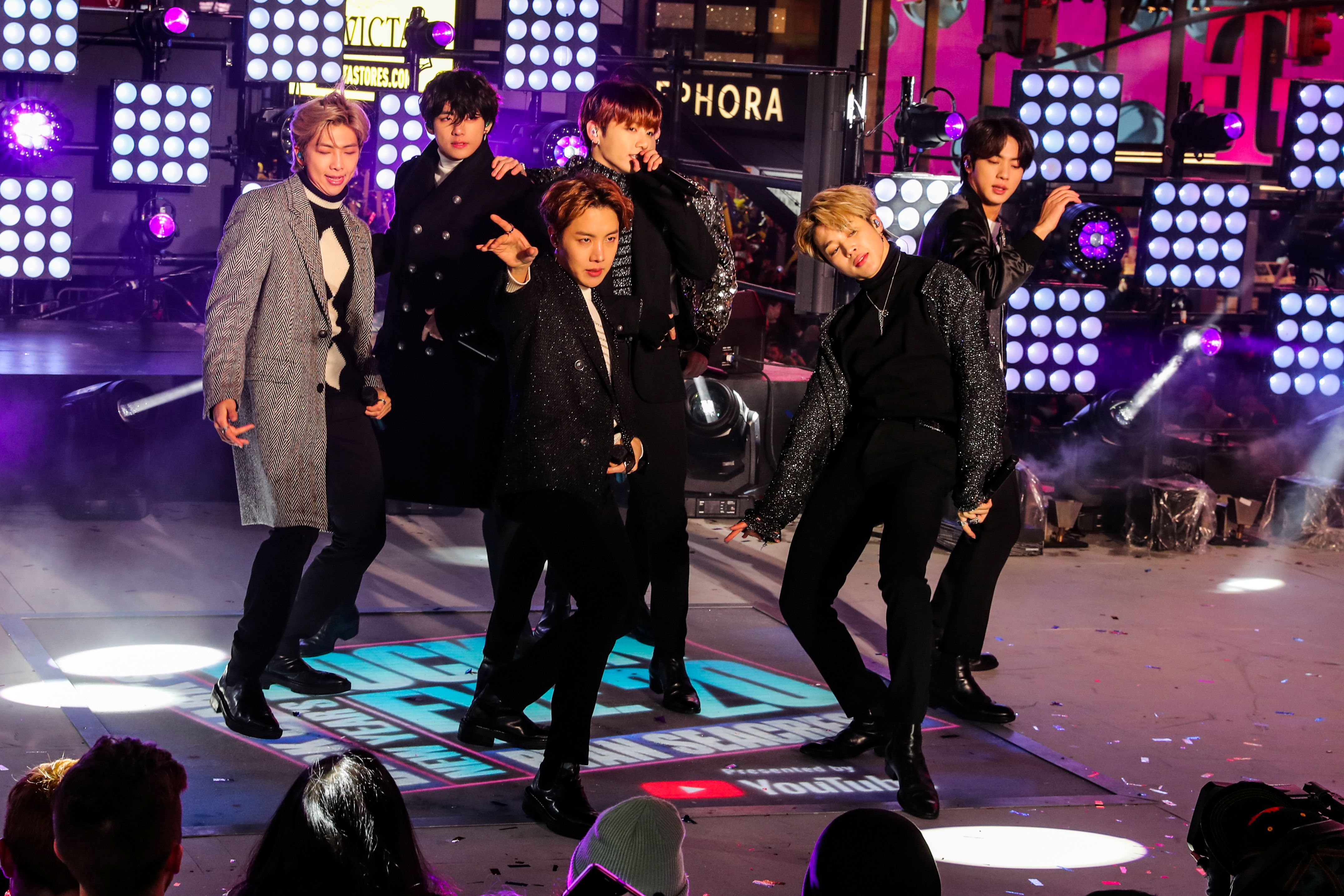The “Korean Wave” and the Expansion of South Korean Culture

Korean Wave
Hallyu is a socio-cultural phenomenon associated with the growing popularity of South Korean culture, especially popular. It was initiated in the late 1990s in connection with the success of Korean television series (K-dramas) and movies in east and southeast Asia. At the beginning of the 21st century, popular music (K-pop) gained importance and remains to this day the largest vehicle of hallyu. Currently, the Korean wave also includes, among other things, online games, comics and animations, literature, cuisine, cosmetics and fashion.
In the last decade, hallyu has found audiences beyond Asia, becoming a global phenomenon. According to the estimates of the Korea Foundation, there are 1,799 Korean wave fan clubs (social media groups) in 94 countries, connecting approximately 99.32 million people (end of 2019). Most fans are in Asia and Oceania (71.81 million, 479 fan clubs), while in Europe there are the most fan clubs (624), connecting 15.5 million people. The Korean wave is becoming increasingly popular in the Americas (about 12.15 million people in 542 fan clubs). The fewest fan clubs and members (154 and 320,000, respectively) are in the Middle East and Africa.
Recent successes on the U.S. market, including four Oscars for the movie “Parasite”, and multiple chart-toppers by the K-pop band BTS, confirm the strength of hallyu. Its success is due to the cultural policy of the Republic of Korea, initiated in the 1990s, which uses globalisation and technological development.
Determinants of Hallyu’s Success
Beginning with the rule of President Kim Young-sam (1993 to 1998), the South Korean authorities treated globalisation as a key impulse for the socio-economic development of the state and a factor shaping culture. As part of its cultural policy, South Korea lifted censorship imposed under military rules (active from 1961 to 1987), which had limited the creativity of citizens. The authorities also encouraged South Koreans to draw on global cultural trends and then co-create them by exporting their content. Globalisation favoured the commodification of culture in South Korea, which resulted in the emergence of creative industries combining pop culture with innovation and technology.
After the Asian financial crisis in 1997, the Kim Dae-jung administration (1998 to 2003) invested in the development of pop culture and new technologies. It treated them as new engines of economic growth and factors strengthening the image of South Korea around the world. The nationwide broadband Internet network infrastructure created at that time enabled the use of modern communication technologies to distribute cultural content. The development of social media and online video platforms (especially YouTube) in subsequent years has allowed South Korean pop culture to reach foreign audiences.
The pro-export nature of creative industries was also favoured by greater interest in this sector by the Korean conglomerates (chaebols), restructured after the financial crisis and more open to expansion on foreign markets. South Korean pop culture found fertile ground among changing Asian societies, in which the middle class, which generated demand for cultural content, has gained in importance since the mid-1990s. The attractiveness of the South Korean offer resulted from the fact that it combined modernity with traditional values, which suited the tastes of Asian recipients.
The Role of the State
Despite marketisation and globalisation processes, South Korea’s cultural policy is still characterised by strong statism. Its implementation is supported by extensive bureaucracy. In addition to the Ministry of Culture, Sports and Tourism (MCST), other institutions are involved in cultural development, such as the ministries of foreign affairs, trade, agriculture or science and information and communication technologies, banks, and local authorities. Specialist government agencies, such as the Korea Creative Content Agency, affiliated with the MCST and cooperating with the Export-Import Bank of Korea, play a special role in promoting the export of cultural content and the development of creative industries.
The state supports creative industries, allocating 1% of the budget for subsidies, grants and loans, among others for start-ups, agencies promoting the export of pop culture, and for artistic fields of study. This year, MCST will allocate $1.42 billion to stimulate creativity at the local level and increase the export of cultural content.
The pillar of Korean wave development, however, is not the direct financial commitment of the state, but its cooperation with the private sector, including chaebols, broadcasters, and the entertainment industry. It is common practice for the state to participate in investment funds, in which funds are primarily allocated to investment banks and private companies. Powerful talent agencies (such as SM, YG, JYP and Big Hit) and media and cultural leaders (for example, CJ E&M) play a special role.
The statist cultural policy, however, could lead to censorship. For example, during the rule of Park Geun-hye (2013 to 2017), the government created a blacklist of over 9,000 artists who, due to their critical attitude towards the president, were cut off from public and private funding.
The Economic and Diplomatic Significance of Hallyu
The power of pop culture in South Korea results from its incorporation into economic development strategies, including innovation. The popularity of hallyu is an impulse for the development of creative industries, recently immersion technologies (virtual, augmented and mixed reality) in particular, and an increase in exports. In 2019, exports related to the Korean wave (both cultural content and related consumer goods and services) amounted to $10.3 billion, and employment in creative industries exceeded 650,000 people. Hallyu is also contributing to the increase in the number of tourists visiting South Korea. In 2009 there were 8.8 million, and in 2019 this had reached 17.5 million. It is estimated that, in 2018, South Korea was visited by 1.5 million strictly hallyu fans who took part in e-sports competitions and visited places known from TV series, movies and music videos.
The popularity of the Korean wave also serves to strengthen soft power and build the South Korean brand as a democratic, technologically advanced, economically innovative and culturally attractive state. Since 2012, the Korean wave has been used in development assistance provided to countries from Asia and Africa. Assistance projects are accompanied by, among other things, dance and vocal courses for young people and the delivery of pop culture content to local TV stations. Korea Cultural Centres, of which there are 32 around the world, with nine in Europe, including Poland, are also promoting hallyu. In turn, government agencies, such as the Korea Foundation, prepare regular reports measuring the scale and specificity of hallyu recipient groups in selected countries. This allows the preparation of an export offer appropriate to a given market. Hallyu also increases interest in learning the Korean language.
Conclusions
Hallyu’s global popularity will grow due to the constant expansion of the offer, with new fields, mastery of the mechanisms of digital distribution and consumption of cultural content, greater orientation towards foreign recipients and the use of new technologies. Elements of hallyu will increasingly penetrate the pop culture of other countries, affecting their cultural industries (such as the film industry in the United States, following the success of “Parasite”).
South Korea has become one of the global pop culture centres also thanks to the involvement of fans around the world. They increase the reach of hallyu through social media activity, and translations of TV series and lyrics of songs. They can also act as a lobbying group. This was shown by the example of one of the Polish TV stations, which, for its negative opinions about a K-pop singer, was flooded with a wave of critical comments in social media and forced to apologise.
Hallyu will also have a greater impact in Poland, where, according to the Korea Foundation, there are around 115,000 fans. The growing popularity of hallyu in Poland may prompt South Korea to increase the export of cultural content and related consumer goods and services to the Polish market. The South Korean example may encourage deeper cooperation between the public and private sectors for the development of creative industries in Poland.



